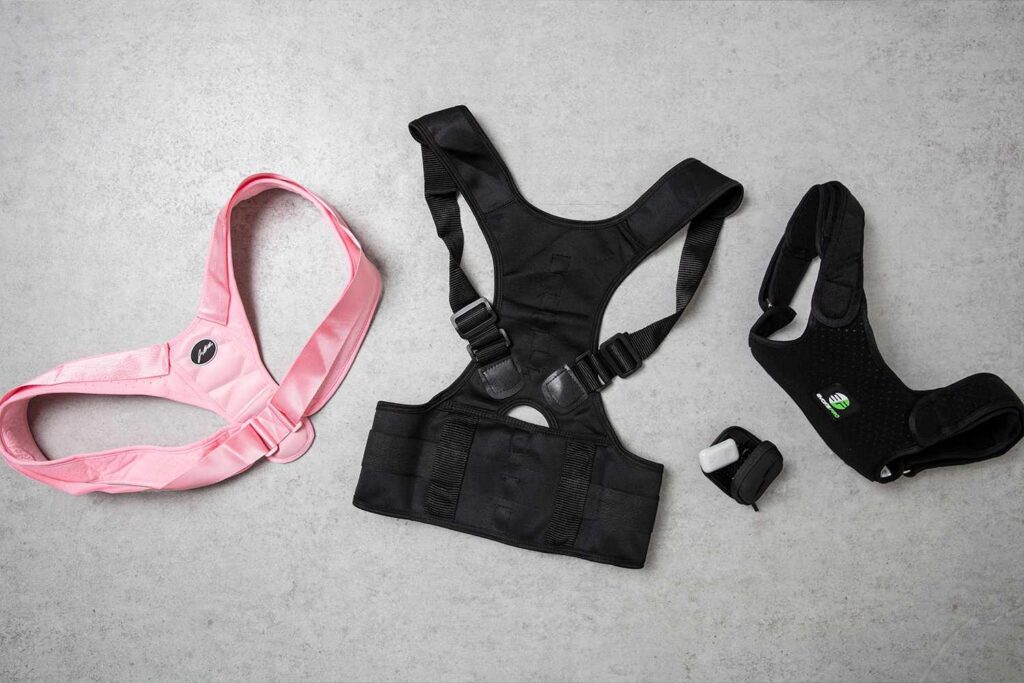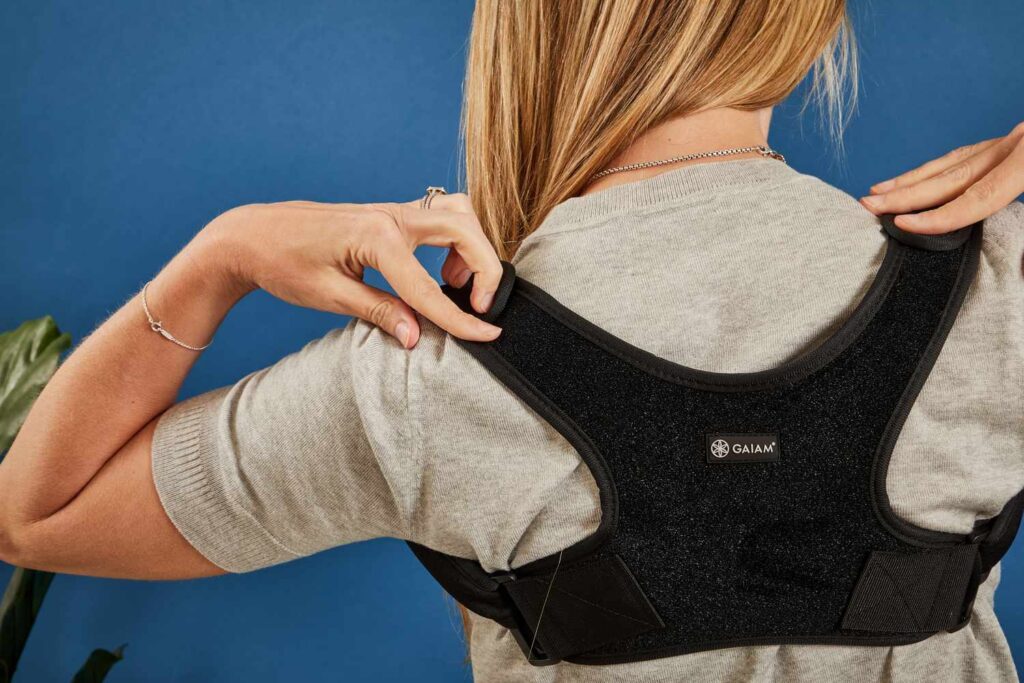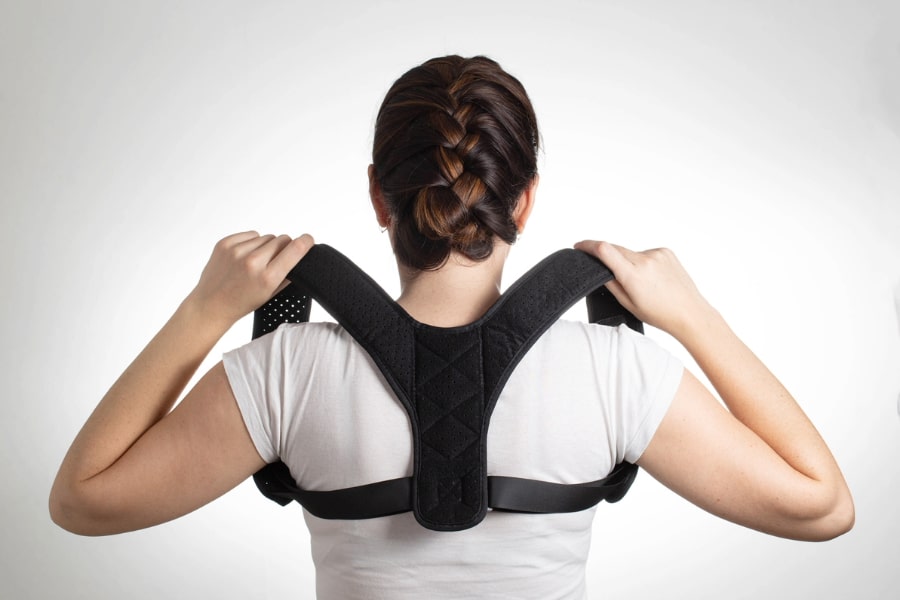Blog
How Posture Correctors Improve Spinal Health
Maintaining good posture is essential for spinal health, yet many people struggle with slouching, forward head posture, or rounded shoulders due to prolonged sitting, poor ergonomics, or lack of awareness. Over time, poor posture can lead to back pain, muscle imbalances, and even long-term spinal issues. Posture correctors, wearable devices designed to support and align the spine, have become popular solutions to address these concerns.
In this article, we’ll explore how posture correctors improve spinal health, their benefits, and tips for using them effectively.
1. The Importance of Good Posture
Good posture aligns the body to minimize strain on muscles, ligaments, and the spine. It ensures that the body’s weight is evenly distributed, reducing stress on the vertebrae and surrounding tissues.
Benefits of Good Posture:
- Reduces Back and Neck Pain: Minimizes strain on muscles and ligaments supporting the spine.
- Improves Breathing: Proper posture allows for better lung expansion.
- Enhances Mobility: Supports a full range of motion without discomfort.
- Prevents Long-Term Issues: Reduces the risk of conditions like herniated discs or kyphosis.
2. How Poor Posture Affects Spinal Health

1. Increased Spinal Stress:
- Poor posture places extra pressure on the spine, particularly in the neck and lower back, leading to pain and discomfort.
2. Muscle Imbalances:
- Overuse of certain muscles (e.g., in the neck and upper back) and underuse of others can cause tension and weakness.
3. Degenerative Changes:
- Chronic poor posture can accelerate degenerative conditions like osteoarthritis or spinal stenosis.
4. Reduced Circulation and Nerve Compression:
- Slouching or forward head posture may compress nerves and blood vessels, contributing to pain, numbness, or reduced mobility.
3. What Are Posture Correctors?
Posture correctors are wearable devices designed to support and train the body to maintain proper alignment. They can be worn around the shoulders, back, or neck to encourage correct posture habits over time.
Types of Posture Correctors:
- Shoulder Braces: Focus on pulling the shoulders back to prevent rounding.
- Full-Back Braces: Provide support for the upper and lower back.
- Straps and Bands: Lightweight devices for mild support and posture training.
- Smart Posture Trainers: Equipped with sensors to provide real-time feedback on posture.
4. How Posture Correctors Improve Spinal Health
1. Supports Natural Alignment
Posture correctors guide the spine into its natural position, preventing slouching and forward head posture.
- Improves Load Distribution: Proper alignment reduces unnecessary pressure on the vertebrae.
- Minimizes Strain: Keeps muscles and ligaments in balance, reducing tension and pain.
2. Reduces Muscle Tension
Poor posture forces muscles to overcompensate, leading to tension and fatigue.
- Posture Correctors Relieve Stress: By supporting the shoulders and back, these devices reduce muscle overuse and allow tight muscles to relax.
- Prevents Overworking: Encourages proper engagement of underused muscles, restoring balance.
3. Encourages Muscle Memory
Posture correctors are training tools that help the body develop muscle memory for proper posture.
- Consistent Use: Over time, the body learns to maintain proper posture even when the device isn’t worn.
- Builds Awareness: Alerts users to poor posture habits, helping them correct themselves throughout the day.
4. Alleviates Pain and Discomfort
Many people use posture correctors to address chronic back, neck, and shoulder pain caused by poor posture.
- Reduces Compression: Relieves pressure on the spine and associated nerves.
- Improves Circulation: Encourages better blood flow by reducing slouching and hunching.
5. Supports Recovery from Injuries
For those recovering from spinal injuries or surgery, posture correctors provide the necessary support to prevent further damage.
- Stabilizes the Spine: Ensures proper healing by limiting harmful movements.
- Aids in Rehabilitation: Encourages proper alignment during recovery exercises.
6. Enhances Ergonomic Habits
Posture correctors encourage users to be mindful of their posture during daily activities.
- Improves Sitting and Standing Posture: Especially helpful for office workers or those with sedentary lifestyles.
- Promotes Active Engagement: Users develop better habits when working, walking, or exercising.
5. Top Posture Correctors for Spinal Health

1. Truweo Posture Corrector
- Features: Lightweight, adjustable shoulder brace for upper back support.
- Best For: Individuals with mild posture issues or upper back tension.
2. BackEmbrace Posture Corrector
- Features: Comfortable, slim design for discreet use under clothing.
- Best For: Office workers or those needing all-day support.
3. Upright GO 2 Smart Posture Trainer
- Features: Wearable device with vibration alerts and app-based posture tracking.
- Best For: Tech-savvy users seeking real-time posture feedback.
4. FlexGuard Support Back Brace
- Features: Full-back brace offering support for the upper and lower back.
- Best For: Individuals recovering from injuries or dealing with chronic back pain.
5. Evoke Pro A300 Posture Corrector
- Features: Adjustable straps and ergonomic design for upper back alignment.
- Best For: Lightweight support for daily posture improvement.
6. Tips for Using a Posture Corrector Effectively
- Start Gradually: Wear the corrector for 15–30 minutes a day and gradually increase usage as your body adapts.
- Pair with Exercises: Combine the device with posture-strengthening exercises like planks, rows, or yoga stretches.
- Focus on Ergonomics: Adjust your workspace or seating to encourage proper posture.
- Avoid Overdependence: Use the corrector as a training tool, not a permanent solution.
- Maintain Consistency: Regular use ensures better results and builds long-term habits.
7. Potential Limitations of Posture Correctors
While posture correctors offer significant benefits, they have some limitations:
- Temporary Solution: They should be paired with exercises to strengthen muscles for long-term results.
- Discomfort: Poorly fitting devices may cause irritation or restrict movement.
- Overuse Risks: Wearing a posture corrector for too long can lead to muscle dependency.
8. Exercises to Complement Posture Correctors
Incorporating posture-improving exercises can enhance the effectiveness of a posture corrector:
- Plank: Strengthens the core and supports spinal alignment.
- Rows: Targets upper back muscles to counteract rounded shoulders.
- Cobra Stretch: Opens the chest and promotes spinal extension.
- Wall Angels: Encourages shoulder mobility and proper alignment.
Conclusion
Posture correctors are valuable tools for improving spinal health by supporting alignment, reducing pain, and training muscles to maintain proper posture. Whether you’re addressing chronic back pain, recovering from an injury, or simply looking to improve your posture, these devices can make a significant difference in your daily life.
For best results, pair a posture corrector with ergonomic habits and posture-strengthening exercises. By taking a proactive approach to spinal health, you can enjoy better mobility, reduced discomfort, and a higher quality of life. Invest in a posture corrector today and take the first step toward a healthier, more aligned body.

